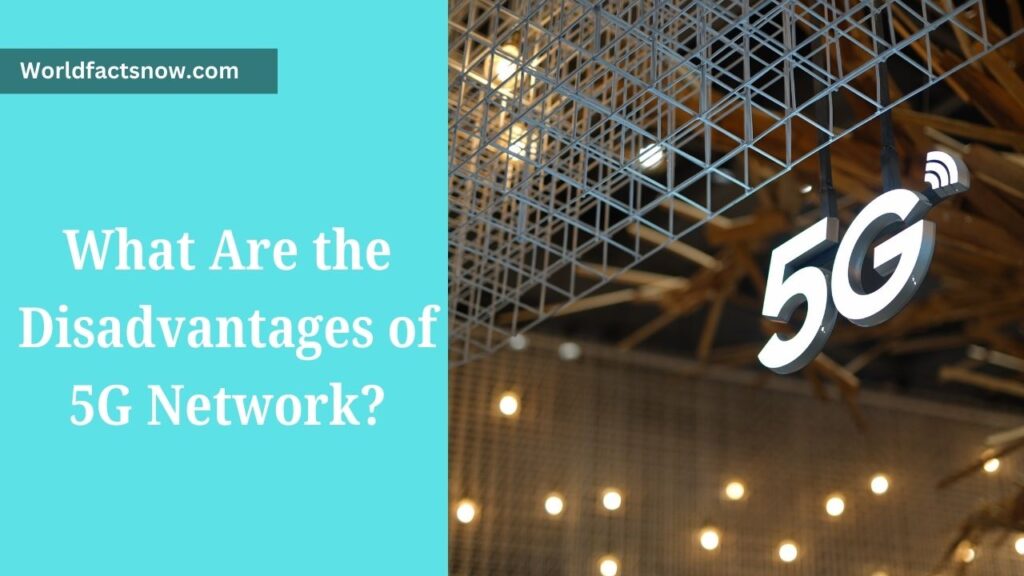Disadvantages of 5G technology has been heralded as a revolutionary advance for communications, offering faster data transmission speeds, reduced latency times and seamless device connection capabilities. Yet as we enter this new era of connectivity it’s crucial that not just its advantages are considered but also any possible drawbacks of 5G; although its advancements provide substantial advancements there can also be obstacles and drawbacks that network providers and users must navigate carefully to take full advantage of its potential benefits.
One of Disadvantages of 5G is Higher Costs
Perhaps one of the primary drawbacks associated with 5G deployment and usage are its higher implementation and usage costs. Upgrading from 4G to 5G requires significant investments in infrastructure, equipment and technology – including replacing or upgrading towers; installing antennas; and adopting advanced technologies necessary for 5G capability support – for network providers to transition successfully; this transition could prove particularly costly to smaller carriers.
Consumer costs associated with 5G networks tend to be higher than for 4G services, such as mobile phone plans becoming more costly or having to upgrade devices compatible with 5G technology. These additional expenses may pose an impediment for entry in developing regions where affordability issues exist, including individuals.
Limitated Signal Coverage
One key drawback of 5G technology compared to its predecessors is its limited signal coverage, particularly its predecessor 4G networks. While 5G boasts faster speeds and reduced latency compared with their 4G predecessors, their higher frequency bands operate over shorter ranges that limit penetration through buildings or obstacles than lower frequency signals used by 5G networks.
As such, users may experience inconsistent service and connectivity issues, particularly in rural and remote areas where infrastructure may not be as advanced. Even within densely populated urban areas where more cell towers may be necessary to ensure comprehensive coverage can also create deployment challenges; similarly relying on dense networks of small cells may mean some users experience stable 5G connections while others don’t enjoy reliable access.
Increase Energy Consumption Now
5G networks require significantly more energy consumption than previous generations due to an increasing need for base stations and antennas, which must remain operational to support performance of the network. Such high energy needs could raise environmental issues that need to be considered when considering their deployment; especially given that sustainability remains at the top of many peoples minds today.
Installation of multiple small cells to increase coverage often results in higher overall energy use and can raise operational costs for network providers – potentially passed along to consumers – while its environmental ramifications raise questions regarding widespread 5G adoption.
Potential Health Concerns
5G technology has raised many concerns over potential risks related to increased exposure to radiofrequency radiation. While regulatory bodies such as WHO and FCC assert its safety, some studies indicate further investigation may be required into its long-term health implications for increased exposure.
Many individuals express concerns regarding the possible impacts of 5G networks on public health, specifically among vulnerable populations like children and pregnant women. While definitive conclusions have yet to be reached in this debate, transparency and research must continue as methods of assuaging public doubt about safety concerns related to 5G networks.
Network Security Challenges can present themselves in various forms.
As 5G technology connects more devices and enables the Internet of Things (IoT), cybersecurity threats become ever more imminent. Cybercriminals now have greater access to connect devices ranging from home appliances and industrial machinery; further complicating management protocols across numerous devices while raising concerns for privacy and data protection.
Integrating 5G networks into existing ones may introduce vulnerabilities if it isn’t managed effectively, while cyber attacks targeting 5G could have serious repercussions, including disruptions of critical services, theft of personal information and loss of trust with technology. Therefore, safeguarding user data while maintaining integrity within 5G networks are of utmost importance for protecting both parties involved and maintaining trust within society as a whole.
Compatibility Issues on Devices
As 5G technology becomes widespread, users may encounter compatibility issues between their current devices and 5G connectivity. Many older phones and gadgets do not support 5G technology and thus necessitating upgrades or replacements which may prove costly for consumers who do not wish to invest in new hardware devices. This may result in considerable frustration on behalf of consumers who may not want or be ready for such purchases.
Due to rapid technological development, 5G devices could quickly become outdated; users could need to replace theirs more often to stay abreast with evolving standards, leading to greater e-waste production and environmental concerns.
Technical Limitations
5G technology does have its share of technical constraints. Reliance on dense networks of small cells to reach optimal performance may prove challenging during times of heavy usage; more users connecting at once could result in slower speeds or reduced performance from one cell alone.
Urban areas often experience network congestion as the high demand for bandwidth outpaces available capacity, leaving users dissatisfied and impatient for uninterrupted connectivity and rapid data transfer rates. Addressing such technical challenges requires investment in infrastructure as well as network management solutions with advanced network monitoring features.
Conclusion
Its Although 5G technology promises to transform connectivity and unlock numerous applications, its implementation entails considerable downside risks that must be acknowledged before moving forward with it. Higher costs, limited signal coverage, higher energy consumption rates, potential health concerns related to use, network security challenges requiring management measures as well as compatibility issues must all be navigated to successfully navigate an often complicated path forward.
As we enter this new age of connectivity, it is vital for consumers, businesses, and policymakers alike to carefully weigh both its benefits and its drawbacks. Understanding 5G’s limitations allows users to make more informed choices regarding technology investments or expectations; striking the ideal balance between innovation and practicality will ultimately shape its future direction and benefit everyone involved in communications as we exploit its possibilities while working through its limitations.

Related More:
The Z Tech Massage Gun Revolutionizes Muscle Recovery



